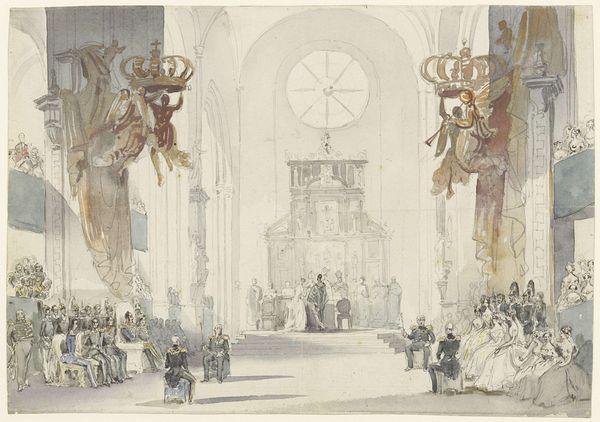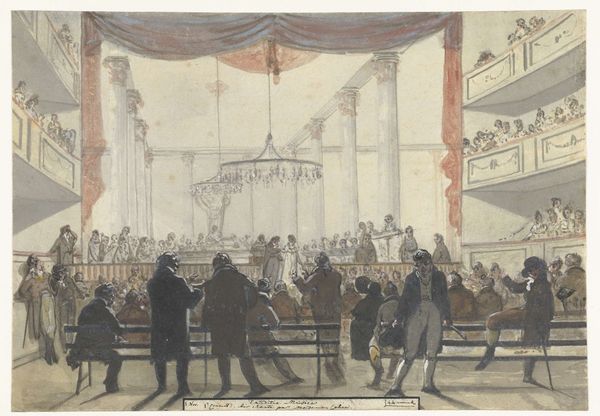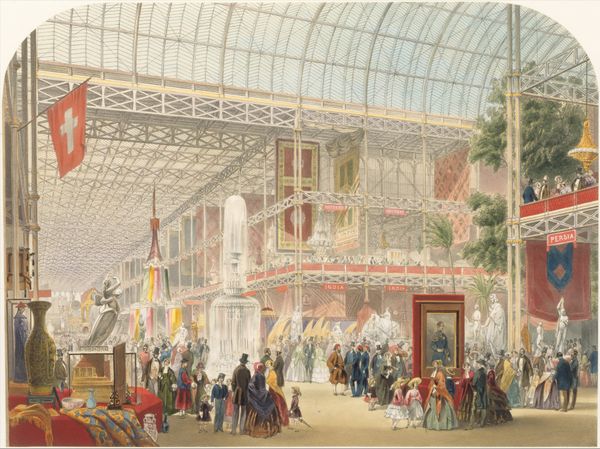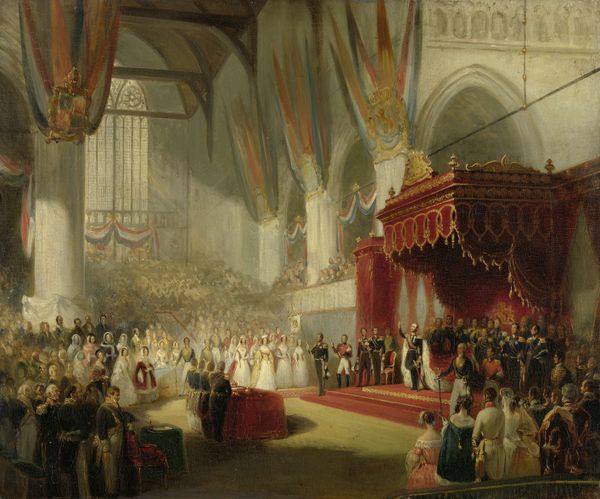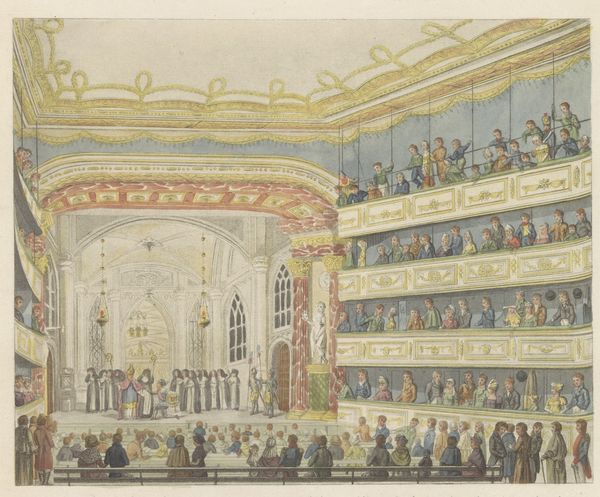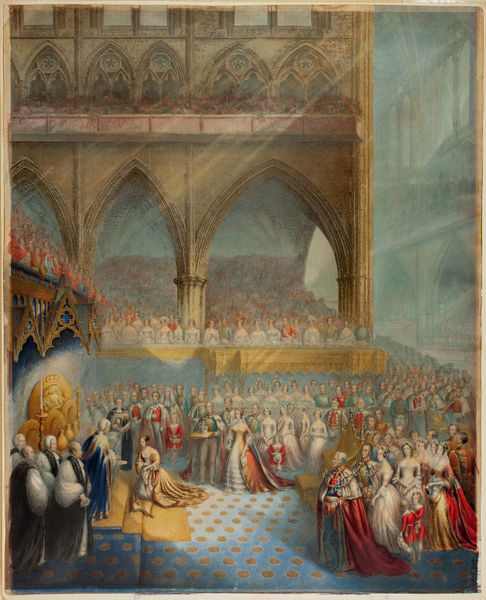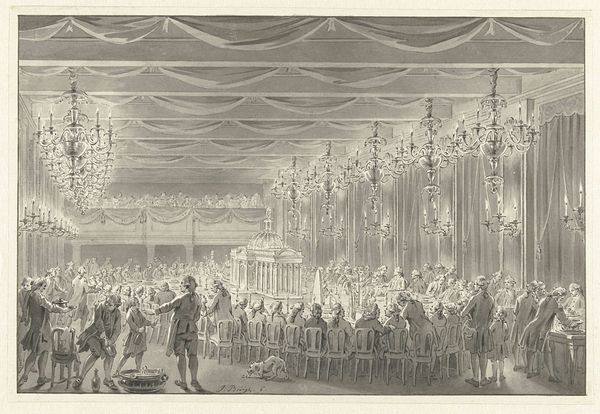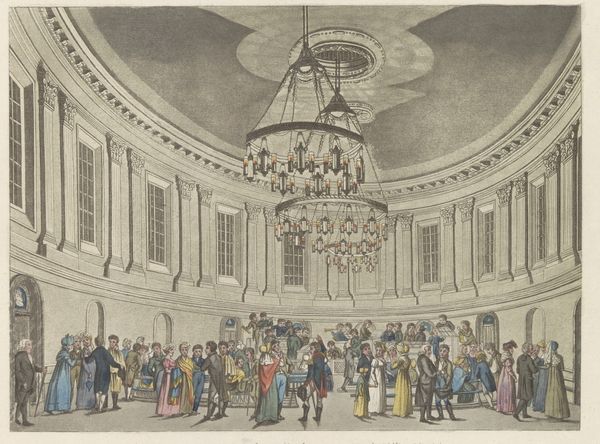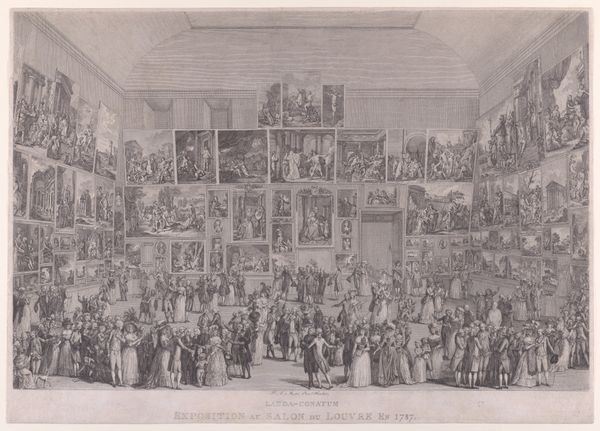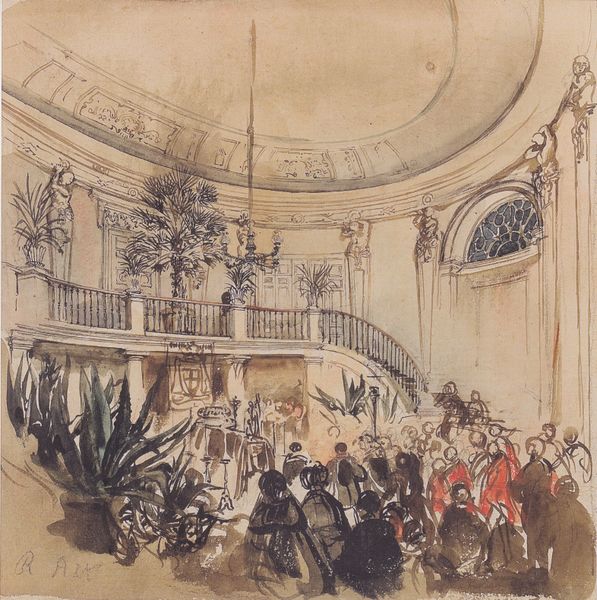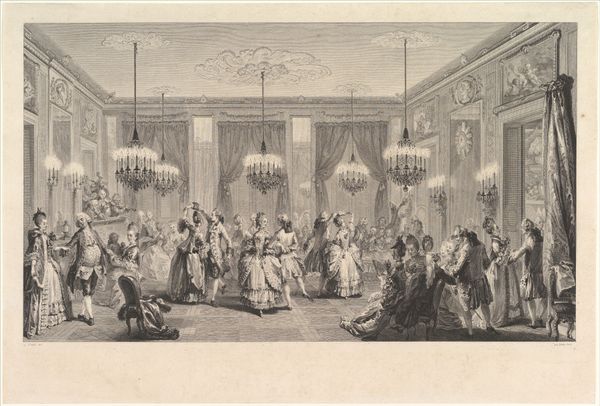
Abolition Meeting Held at Willis's Rooms in Honor of Harriet Beecher Stowe 1853
0:00
0:00
drawing, mixed-media, print
#
portrait
#
drawing
#
mixed-media
#
narrative-art
# print
#
figuration
#
genre-painting
#
history-painting
#
mixed media
Dimensions: sheet: 8 11/16 x 14 11/16 in. (22 x 37.3 cm)
Copyright: Public Domain
Editor: This is William Henry Fisk's "Abolition Meeting Held at Willis's Rooms in Honor of Harriet Beecher Stowe," from 1853. It looks to be a mixed media work, a drawing and print. The scene is very crowded and feels... well, rather celebratory. What can you tell me about this gathering? Curator: It's vital to situate this work within its socio-political context. The celebration is for Harriet Beecher Stowe, whose "Uncle Tom’s Cabin" galvanized the abolitionist movement. Note the assembly; it's a British audience honoring an American writer whose words ignited debates on race and freedom. How do you read the composition in relation to power dynamics here? Editor: Well, Stowe is placed centrally on a dais, surrounded by other figures of importance, while the audience seems to extend endlessly. Curator: Precisely. This work highlights the international dimensions of the anti-slavery movement. It also invites a critical look: who is present in this celebratory space, and equally important, who is conspicuously absent or marginalized in this representation? The composition speaks to the structure of visibility and power. Consider how class, gender, and race intersect to shape this historical moment, as documented here. Editor: It’s interesting to consider that the print, itself a widely distributed medium, further amplified Stowe’s message and the importance of this specific event. I hadn't considered the reach of visual media in furthering abolitionist causes. Curator: Exactly. The print served as a form of visual activism, reaching audiences beyond the physical confines of Willis's Rooms and sparking dialogue on abolition and social justice. This piece prompts questions about how images shape our understanding of history and our responsibilities within it. Editor: I see this piece differently now, considering it not just as a record, but as a part of the abolitionist movement itself. Curator: Absolutely. It's a reminder that art is not created in a vacuum but is entangled with complex social struggles and the fight for a more just world.
Comments
No comments
Be the first to comment and join the conversation on the ultimate creative platform.
